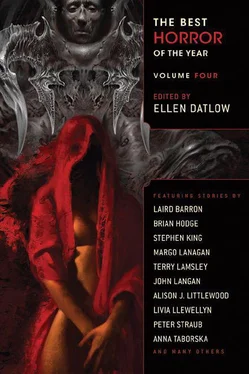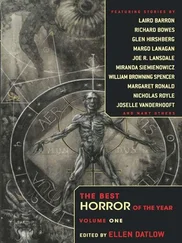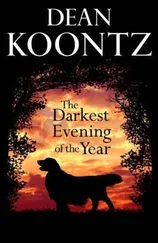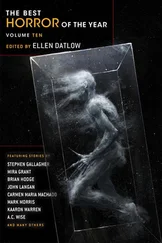And she says, “It ain’t mine to sing.”
And he says, “Well, whose is it?”
And she says, “The family. Ask them.”
And he says, “What family?”
And she says, “You know .”
And he says, “No I don’t .”
And she says, “Yes you do , and that’s all I’m a-sayin’.”
And she says nothing and he says nothing and then Pete stops the tape. And I say, “That’s clear as mud.”
“No, she was right,” Pete says. “My grandpa knew it but he didn’t realize it. She’d sung it for him. The answer was right there in the lyrics.” And Pete tells me to listen, and he rewinds the tape and plays the beginning:
I come from a lovin’ family
That lives where the two creeks meet.
At least that’s what I hear. It’s tough, because the old lady is singing kind of screechy, and the recording is crap, all full of hiss and other junk.
Pete turns it off and asks me what she sang. I tell him what I heard and he shakes his head no. “She didn’t say ‘a lovin’,’ ” he says. “You heard her dialect, she’d have pronounced it ‘luhvin,’ but instead she sings almost a long ‘o’ like ‘loavin.’ And listen to the word before too.”
So he plays it again, and damned if it doesn’t sound like “loavin,” and in front of what I thought was “a” I can just barely hear, over all the noise, a t-h sound.
“What did you hear?” Pete asks.
“The loavin’ family?” I say, feeling stupid. “What the hell’s that, folks that make loaves of bread?”
“The L-O-V–I-N family,” he spells out. “Spelled like lovin’, but pronounced ‘loavin.’ It’s a name. Not a common one in the Appalachians, but a real one. Louvin is another version of it, like the Louvin Brothers?”
I nod my head. I’ve met Charlie Louvin — mighty nice man, though I hear his brother Ira was mean as a gutshot snake.
Then Pete tells me he’s gone online and checked the records for the county where Bertha Echols lived, and there was a Lovin family who lived there around 1935, when Roger Waitkus made that recording, but Pete couldn’t find anything about them after that.
So I asked him, “What are you sayin’? That this family’s got the last verse to the song?”
“Why not?” he says. “That stuff gets handed down, and after all, it’s their song. If anybody’d have it, one of the Lovins would.”
So I ask if he can’t find any modern records about them, what makes him think there’s still any Lovins left. And he says there’s still places up in the mountains where the census takers don’t even go, still folks who don’t pay taxes or social security, still people the government don’t even know exist, and if they do, they couldn’t care less, since they don’t have any money to pay taxes anyway.
Well, it all sounds kind of dubious to me, and he can see it in my face, but then he starts pitching me. “Think about it, Billy,” he says. “Think about the singer who introduces that last verse to the public. Think about TV appearances, think about record sales. Boy, this is the closest anybody’s ever come to finding this verse — and maybe the real story of the Lovins beside. I always liked you, always liked your singing, always liked your company… so why don’t you come with me?”
I thought maybe there was more to it than that. Pete’s sort of a pip-squeak, and I figured he didn’t like the thought of going up into those mountains alone. Me, I’m a pretty big guy, and I got a nice collection of pistols, which is two good reasons for wanting me to come along. It was probably a wild-goose chase, but hell, I didn’t have to start touring for another two weeks, and if we did find that verse, well, he was right about the publicity, and I could use it. If you ain’t been in O Brother, Where Art Thou ? bluegrass is still the poor cousin in the music business.
So I say sure and Pete says great, but don’t tell a soul. He doesn’t want anybody else knowing about this, which is fine with me.
Next day, six o’clock in the morning, God help me, I drive my car over to his place, park it in his garage, and we go off in his RV. It’s a nice one, with a toilet and big bunks, just in case we got to spend a night or two someplace where there are no motels. Pete lives alone too, so nobody knows what we’re doing except us.
We drive east about four hours into North Carolina, just stopping once to take a leak and get some Krispy Kremes, then up into the Smokies, and we go to this town where Bertha Echols lived. I stay in the RV, behind the tinted windows, and let Pete talk to the people, because they might recognize me and we’re keeping a low profile. He checks first at the post office, this little building not much bigger than an outhouse, but they tell him there’s no such family living around there.
So he comes back and tells me this, and says he’s gonna poke around town and I say fine, so I read some magazines while he’s poking. Around one o’clock he comes back and says he’s talked to dang near every old fart in the village, and nobody knows a thing. Never heard of no Lovins around here, they say. Closest Pete gets to anything is one old black man who says there used to be Lovins living years ago way up in the hills. The old place might be there, but nobody’d be alive now.
That’s good enough for Pete. I tell him that if there’s nobody alive up there then there’s nobody to sing any damn songs, but he’s like a kid in a candy store. He pulls out these, whaddyacallem, topographical maps with all the mountains and streams on them, and starts looking, and I ask what he’s looking for, and he says, “Like in the song—‘I come from the Lovin family that lives where the two creeks meet.’”
“Jesus,” I say, “where the hell don’t two creeks meet?” But he kept looking and narrowed it down to four places he thought there could be a cabin. I said, “Pete, look at all those streams and creeks up there, and all the places they meet! Must be a hundred. How can you say these four are the right ones?” Well, he mumbled something about “cultural geography” or some such B.S., and I thought, hell, it’s his dime.
So we start up into the mountains and it isn’t long before we’re on dirt roads, and with the dirt roads come the ruts and the limbs fallen down over the road, and since I’m the big guy and Pete’s driving, I’m the one got to get out and move them. Even with the crappy roads, it’s pretty up there. Spring’s come, and the trees are greening and there are wildflowers all over. We see a few deer now and again, some rabbits, birds taking dust baths in the dirt, and none of them seem very scared of us, almost like it’s annoying that they got to get out of the road.
We get near this one place, so we park and walk through the woods — Pete’s got himself a compass — and soon we find a place where two creeks meet. I see now what Pete meant. There’s a little open area at the base of a bluff, a good place for a cabin, but there isn’t one there, not even a foundation, so we go back and drive on.
Next place it’s the same thing. Pretty site, but nothing there. It’s getting kind of late now, and I tell Pete we oughta head back, but he says just one more. So we go another ten or so windy miles of rotten road. At least this site’s closer to where we park, about a hundred yards through the trees. And son of a bitch if we don’t see a cabin there, nestled right sweet in this little hollow, just like a cover painting on one of those Songs of the Mountains CDs. A few outbuildings are near fallen down, and next to one of them is a pole about eight foot long and six foot in the air, its ends stuck in the forks of two trees, and I think all it needs is a swing hanging from it.
Читать дальше












